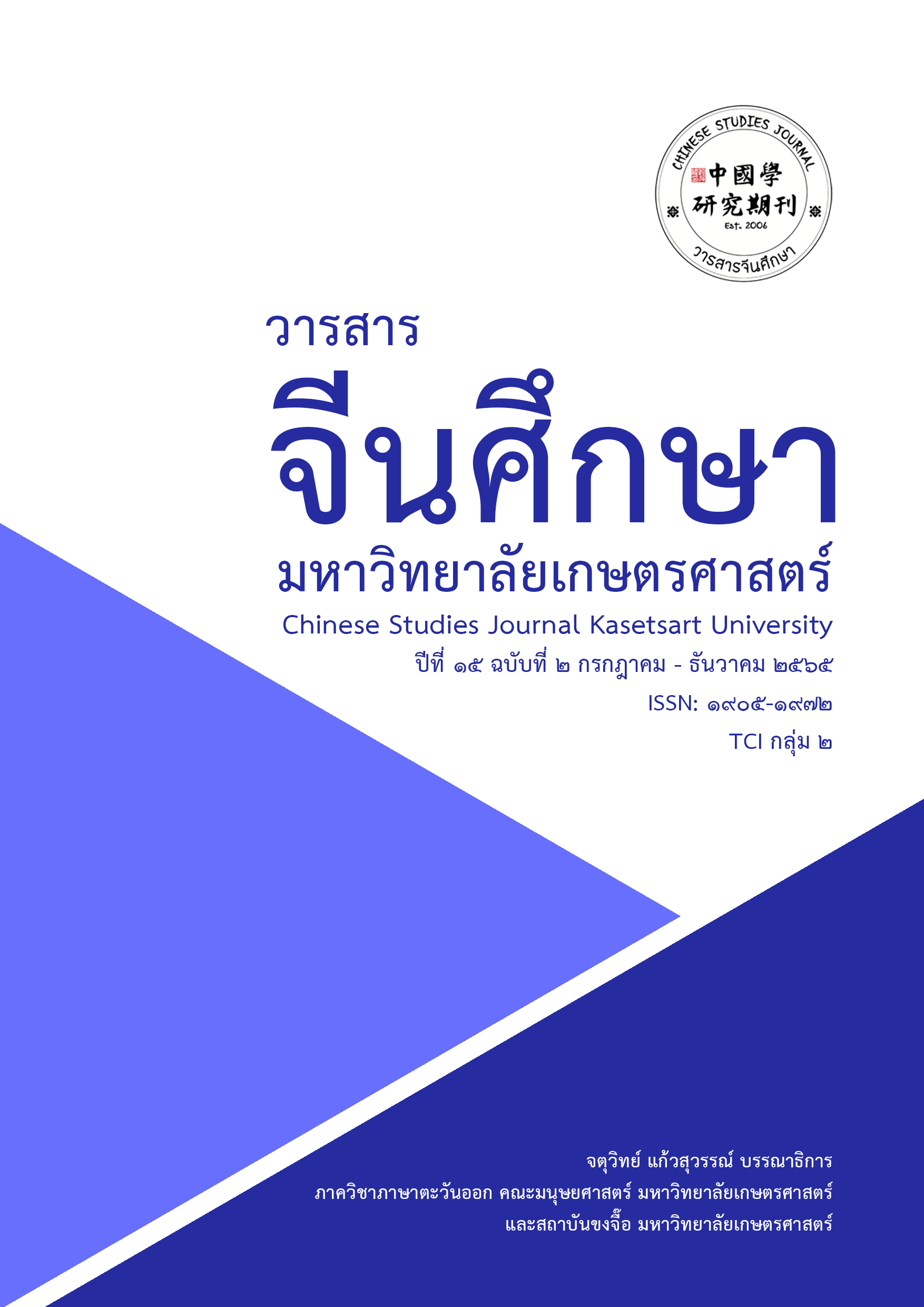Simplified Chinese Character Writing for learners of Chinese with a Japanese language proficiency: Precautions from a Contrastive Study การเขียนอักษรจีนประยุกต์สำหรับผู้เรียนภาษาจีนที่มีพื้นความรู้ภาษาญี่ปุ่น: ข้อพึงระวังจากการศึกษาเปรียบต่าง
Main Article Content
Abstract
This article presents differences between Simplified Chinese characters and Japanese Kanji characters that may cause problems of Simplified Chinese character writing for learners of Chinese with a Japanese language proficiency. This research aims to: (1) analyze differences between the appearance of Simplified Chinese characters and Japanese Kanji characters; (2) study the statistical proportion of differences between aforementioned character sets; and (3) synthesize precautions of Simplified Chinese character writing for learners of Chinese with a Japanese language proficiency. The data studied in this research are from 3,500 commonly used Chinese characters and 2,136 commonly used Japanese Kanji characters. The analysis of differences between the appearance of the characters relies on the Chinese and Japanese character dictionaries with the character writing concept of Wang Xiurong (2013).
The finding of the research was that there are 2 types of differences between the appearance of Simplified Chinese characters and Japanese Kanji characters. The first type is the differences that do not affect the interpretation but different from the writing tradition. Most of the differences are caused by the stroke style of the character. The second type is the differences that affect the interpretation which are caused by the change of character simplification of Simplified Chinese character and Japanese Kanji character. Most of the differences are due to the independently different form of the character’s counterpart between two languages.
Article Details

This work is licensed under a Creative Commons Attribution-NonCommercial-NoDerivatives 4.0 International License.
ผลงานทางวิชาการที่ลงตีพิมพ์ในวารสารจีนศึกษา มหาวิทยาลัยเกษตรศาสตร์ เป็นลิขสิทธิ์ของผู้เขียนหรือผู้แปลผลงานนั้น หากนำลงในวารสารจีนศึกษาเป็นครั้งแรก เจ้าของผลงานสามารถนำไปตีพิมพ์ซ้ำในวารสารหรือหนังสืออื่นได้โดยมิต้องแจ้งให้ทราบล่วงหน้า แต่หากผลงานที่ได้รับพิจารณานำลงในวารสารจีนศึกษา เป็นผลงานที่เคยตีพิมพ์ที่อื่นมาก่อนเจ้าของผลงานต้องจัดการเรื่องปัญหาลิขสิทธิ์กับแหล่งพิมพ์แรกเอง หากเกิดปัญหาทางกฎหมาย ถือว่าไม่อยู่ในความรับผิดชอบของวารสารจีนศึกษา มหาวิทยาลัยเกษตรศาสตร์ ทั้งนี้ ความคิดเห็นต่างๆ ในบทความเป็นความคิดเห็นส่วนตัวของผู้เขียน ไม่เกี่ยวกับกองบรรณาธิการวารสารจีนศึกษา มหาวิทยาลัยเกษตรศาสตร์
References
อภิญญา ศิริวรรณ. (2559). อักษรจีน : กระบวนการสื่อสารและผสานความหมายผ่านอักษรเลียนธรรมชาติ.วารสารมนุษยศาสตร์และสังคมศาสตร์, 8(2): 293-324.
丁曼.(2018).日本的汉字.北京:新星出版社.
黄伯荣,廖旭东.(2018).现代汉语.北京:高等教育出版社.
潘钧.(2013).日本汉字的确立及其历史演变.北京:商务印书馆.
王宁.(2014).通用规范汉字字典.北京:商务印书馆.
王秀荣.(2013).国际汉语汉字与汉字教学.北京:高等教育出版社.
中国社会科学院语言研究所.(2019).新华字典第11版.北京:
商务印书馆.
沖森卓也.(2014).五十音引き漢和辞典.東京:三省堂印刷株式会社.


